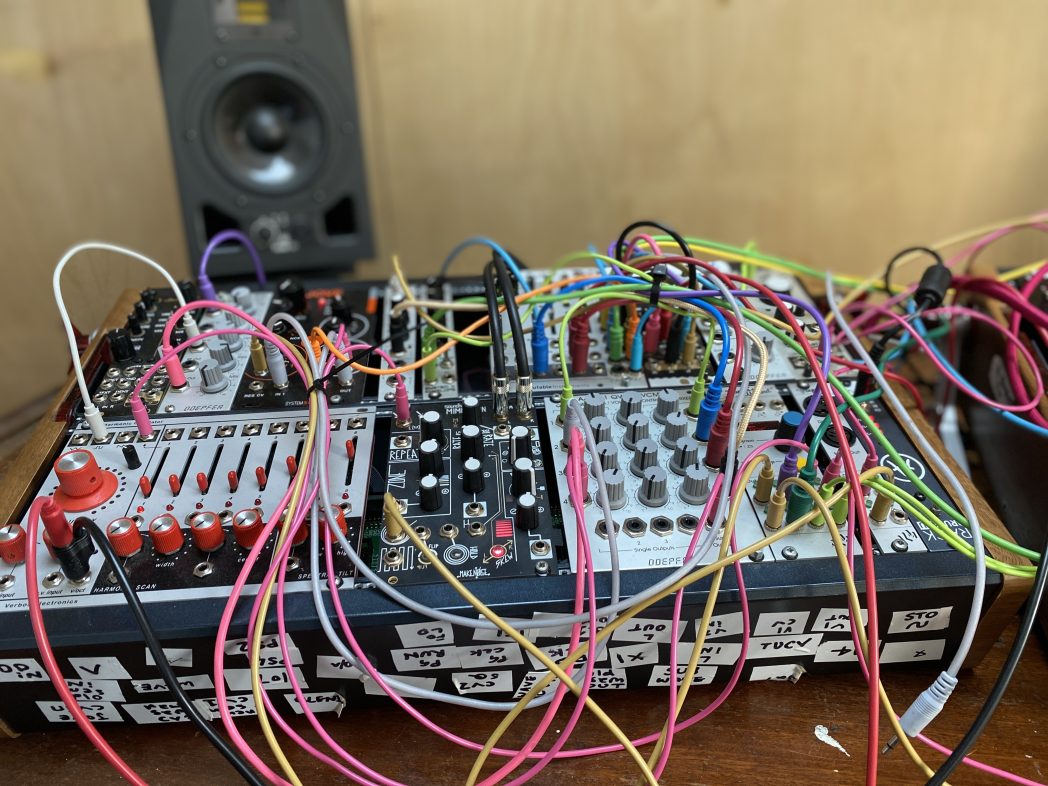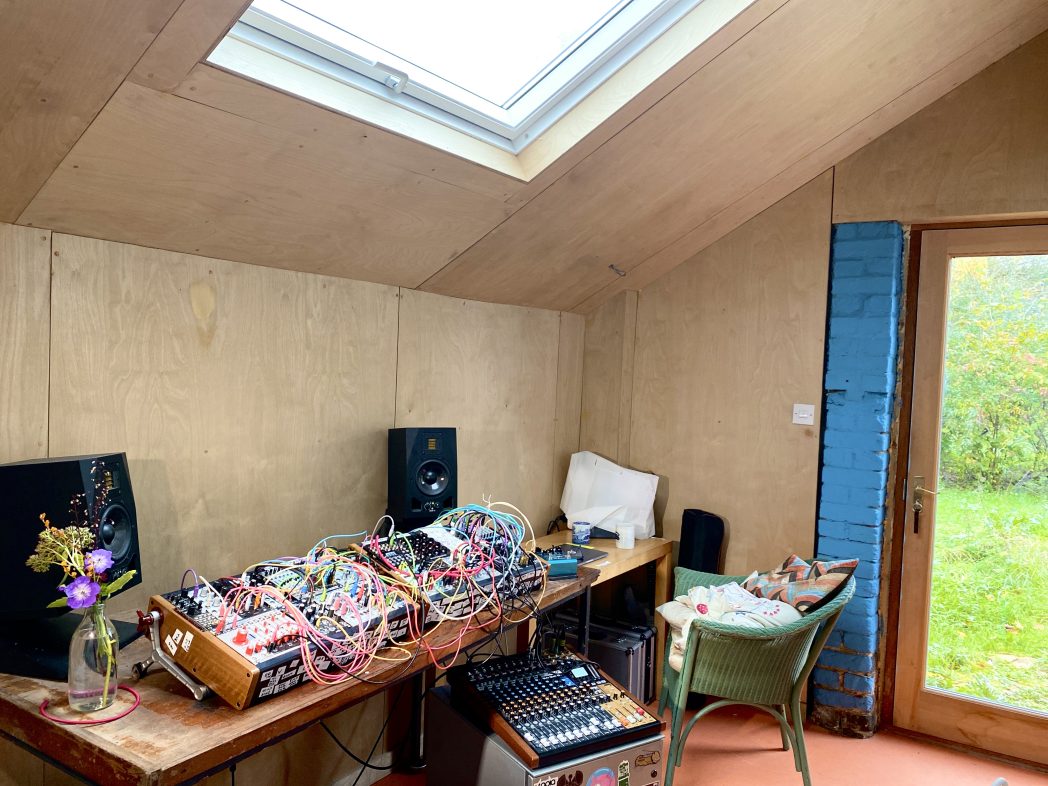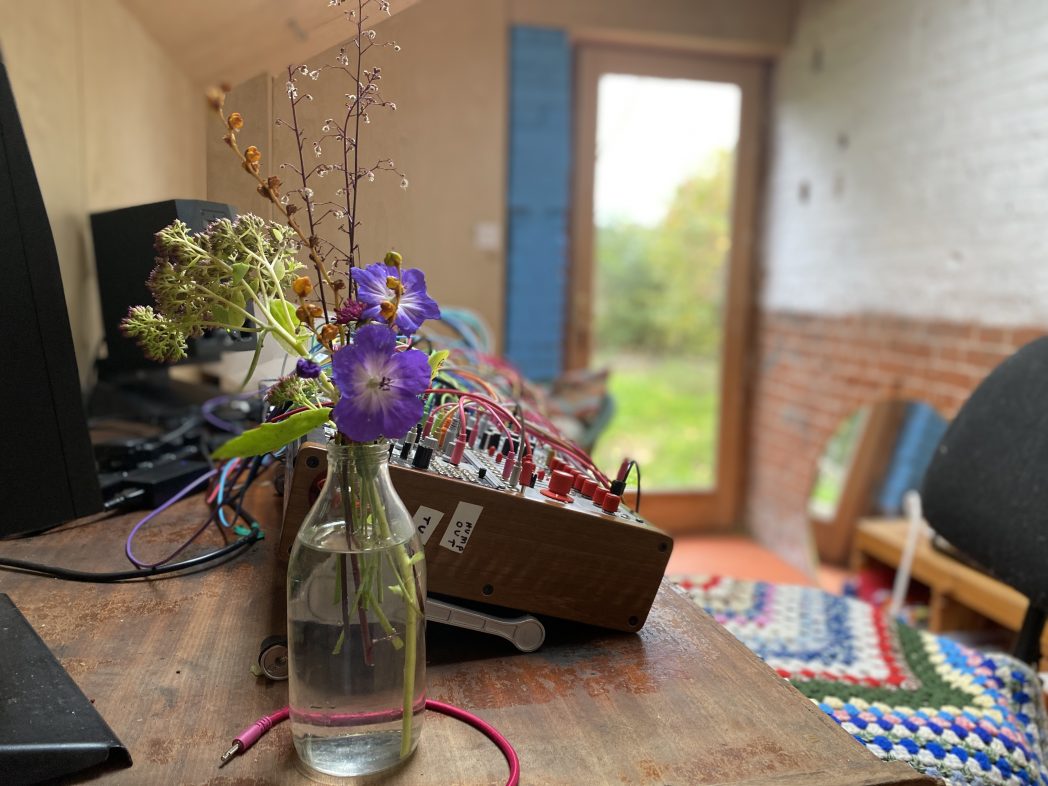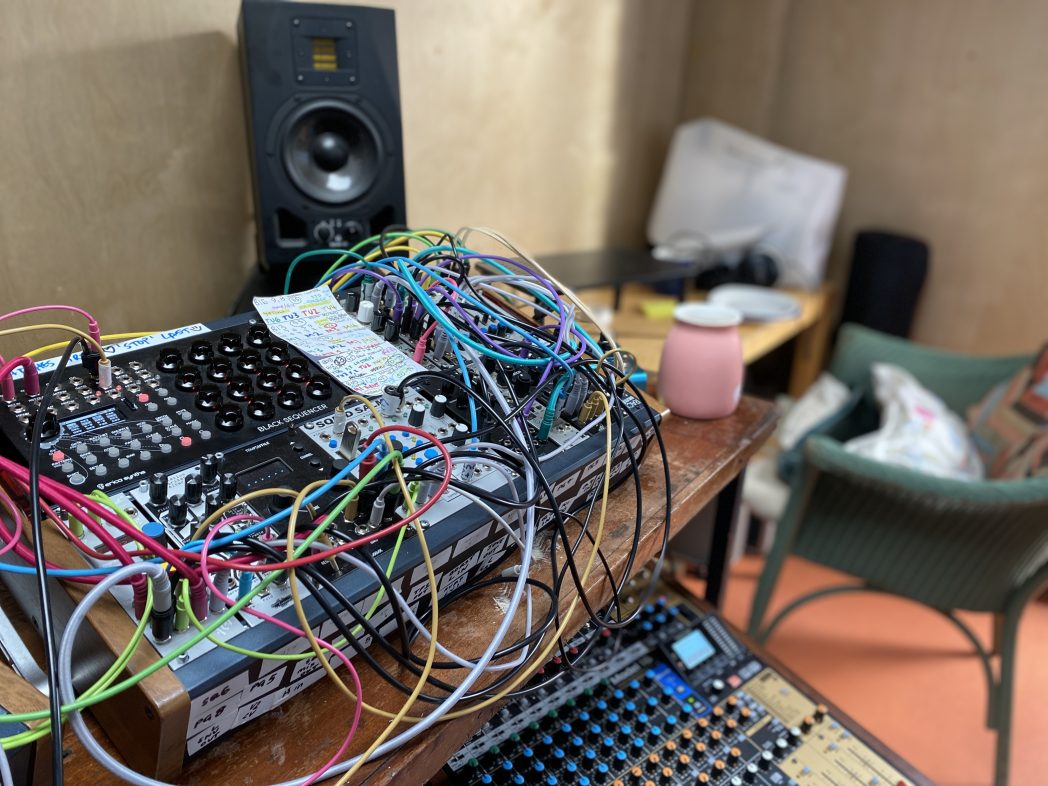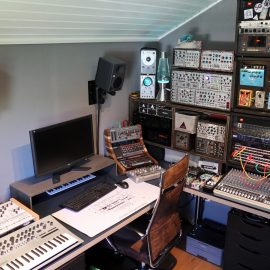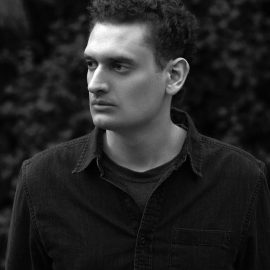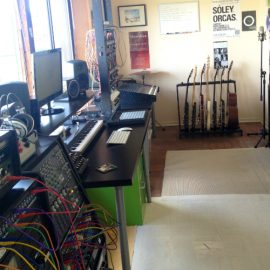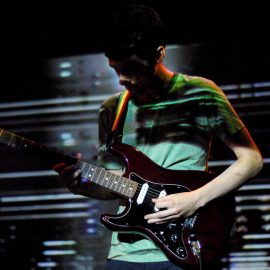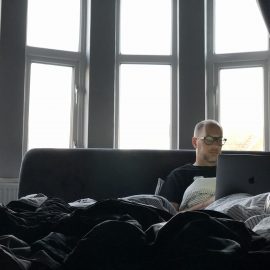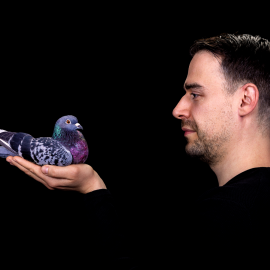Let’s start at the very beginning. Can you tell us how you got involved in composing, and what was your very first piece of gear?
My first piece of gear was the Korg Electribe ESX-1. It was my entryway into making music. I bought it around 2010, and it served me really well for 5 years.
How many different studio iterations have you gone through, and what does your final setup look like right now?
I’ve gone through two main studio iterations. I think of the first as ‘the MIDI years’ in TR-33N with my partner, Dave Stitch. I played the ESX-1, and he had an MPC-500. We used those to trigger a revolving cast of drum machines and mono synths, such as a TR-808, RY-30, Bass Station 2, Little Phatty, MKS 50, XOXbox, Virus Ti, Virus Snow, and some little Volca synths. We used the ESX-1 as the master clock. When we played live, we used the MIDI Kawai Mav 8 to keep everything in sync, and for recording into a DAW, we used the Expert Sleepers USAMO.
Around 2015, this then started to morph into modular with the addition of a drum machine made for us by Blackmass Plastics. All the synths were in a big rack in the sitting room flanked by a pair of Rokit 10-3 speakers. Playing music was a lot of fun! But then Dave found a CS-60 going cheap in a rural auction room, and things started to get really difficult space-wise. We joined a local artists co-operative here in Suffolk that has affordable studio space and decided to move out all the big synths. Meanwhile, we’ve converted a lean-to at the back of the house into a workspace complete with an old science lab desk and a pair of Adam A5X monitors.
In 2018, I started composing music in earnest as a solo project under my own name. My ESX-1 had broken, and I wanted to forge a new path. This started with a very small, cheap and dirty Eurorack set-up with the later addition of a TR-09 as drum machine and clock. Currently, I have two 84hp cases side-by-side, which I use for improvising, composing and playing live. I have a TASCAM Model 16 for recording live takes, which I make straight onto the internal SD card so I don’t have to involve a laptop or DAW until the mixdown stage. My cases have to be able to move off the table and onto a shelf without too much fuss so I can free up space for the kids to do schoolwork or if anyone wants to use the sewing machine. This suits me fine as I play out live as much as I can, so it’s a useful road test to see ‘how easily can I move this case with these patches?’
Tell us about your favourite piece of hardware.
My modular synthesiser. It’s hard to choose a single module as they need each other to work.
And what about the software that you use for production?
I use Studio One 6 and Adobe Audition, depending on what needs doing.
Is there a particular piece of gear that you’re just dying to get your hands on, and do you think one day you’ll have it?
I really try to squash gear lust when it arises by using it as an opportunity to work out how I could do that thing as far as possible with what I’ve already got. Studio monitors would be the exception. I keep looking at Genelec’s 8030s.
Can you please share some aspects of sound design in your work?
I use a lot of processed speech in my live sets, which I have fun sourcing from across the culturesphere. I mainly sample female voices speaking in English. I play back these really long clips of up to 30 minutes or so using a long-player module called Radio Music. Before I load them in, I hone in on sections of audio containing words or concepts that I find interesting and discard the rest, then EQ them or add effects such as autotune or distortion so that when I flip between ‘stations’ on the Radio Music, there is an audible rupture, a change of timbre, a mood switch.
Any particular new techniques that you tried out for your new album?
For Volta, I’ve used a programmable Eurorack sequencer for the first time. I have concentrated entirely on creating these melodic patterns to feed into my oscillators, whose outputs then go into a quad VCA mixer and out into stereo delay with a reverb pedal at the end of the chain. That’s literally it. I wanted to be able to play my album live, so I had to program the sequences rather than leave everything to chance as I usually would.
What does your live setup look like, and what do you bring with you when you travel for an extensive tour?
My studio set-up and my live set-up are identical. So, with two 84hp cases, a Strymon Bluesky reverb pedal and my big TASCAM mixer, that way I can record all my sets and use the backlit display as a timer to see how long I’ve been playing without having to stop and dig out a phone.
What is the most important environmental aspect of your current workspace, and what would be a particular element that you would improve on?
I am so happy with all the natural light that floods into my workspace. I would like to improve the space with some acoustic treatment and better monitoring.
What can you tell us about your overall process of composition? How are the ideas born, where do they mature, and when do they finally see the light?
I love working with modular because when I’m composing, I’m listening, and I’m in a feedback loop with a continuous stream of sound. I don’t relate as much to this idea of conceiving something in silence, in my head, and then translating that idea into sound later. Whether I’m programming a sequence or improvising by building up some weird rhythmic, textural noise, I’m always listening to what I’m doing. When I feel I have enough of a central idea to work with, I start on the fun bit, which is using my modular synth to expand that idea, to get as fully inside the sound, just sitting there and playing with it for as long as I like. Once I’m happy, then it gets recorded live. Occasionally, I will build a track in a DAW out of recordings, either chopping up things and assembling them on a tempo grid if it’s a percussion-based track or, more typically, ignoring the grid altogether and just layering or arranging sections of recordings by ear to make a sort of collage.
After the piece is complete, how do you audition the results? What are your reactions to hearing your music in a different context, setting, or sound system?
It’s like some kind of elaborate dance you have to play with yourself isn’t it, some kind of weird internal trust exercise. Initially, I’m auditioning it while playing with it live in the studio. But sometimes I get too into playing something or too familiar with it, or utterly turned off by it – either way, I lose all perspective, so I’ll stop and record it and then leave it a week or two on the SD card before coming back to listen. If it’s improv and it’s still not working, then I’ll abandon it and move on as there’d be no way to recreate the patch in any case. If it’s a saved sequence, I will either abandon it or rework it depending on how I feel. Sometimes, it’s useful to have odds and ends of sequences programmed into banks to find later. They could come in handy for something else later. I’ll audition mixdowns by playing them in the car, on headphones, on studio monitors. I’ll go back and tweak the mix if I hear something isn’t working. In terms of life, I find what I’m dealing with in terms of PA or sound system is so variable that unless something is really causing me alarm on stage, I will try to ignore it.
Do you ever procrastinate? If so, what do you usually find yourself doing during those times?
Yes absolutely. I’ve come to realise that tidying my workspace, and if that fails, then tidying the house is somehow part of my process. There is something about changing the energy of the space, doing some long overdue chore, clearing out old feelings or associations, and ushering in some freshness that really helps me make way for something new. I might journal or go for a brisk, blustery walk to try and work out what I’m feeling and check in to see if there’s an underlying problem that’s stopping me from doing what I need to do.
What gets you inspired?
Other people’s amazing creative work, whether that’s music, painting, writing, or film. I find some kinds of reading or study especially important for tapping into a flow state – philosophy, divinity, poetry – things to do with making or finding meaning. I write a journal. I’m always noting down fragments of ideas, strings of words. I’m looking for things that open up the universe or reveal the hidden spaces within us.
And finally, what are your thoughts on the state of “electronic music” today?
It’s as inspiring, multifarious and beautiful as all the people who make it.
